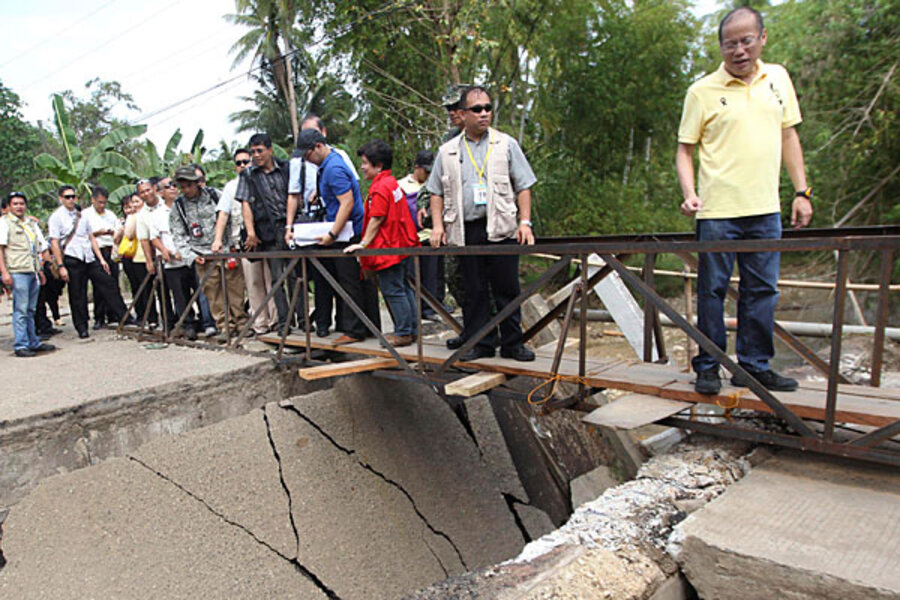Negros earthquake: President Aquino criticizes shoddy road building
Loading...
| Manila
Philippine officials conceded Wednesday that there was little hope of finding any survivors among 71 people still buried in landslides set off by a powerful earthquake, as jittery residents stayed away from their homes amid a flurry of aftershocks.
Soldiers, rescue volunteers and villagers using picks and shovels have not found anyone alive under concrete rubble and tons of rocks and mountain soil since the magnitude-6.9 quake struck two townships in central Negros Oriental province on Monday. So far, 26 bodies have been recovered and identified.
"I am still hoping against hope, but the chances (of recovering survivors) are very slim. If you see the landslide, it's huge and there is no chance of them surviving," said Benito Ramos, head of the Office of Civil Defense.
IN PICTURES: Negros earthquake
Ramos accompanied President Benigno Aquino III on a visit to the disaster area, during which Aquino ordered the immediate construction of detour roads to revive commerce and speed up the delivery of relief supplies.
Aquino criticized the shoddy road construction, while Ramos said bridges that were damaged were not built to sustain such a strong quake.
Eleven bridges reportedly were damaged in Negros Oriental, three of them beyond repair.
Philippine seismologists said they were previously unaware of the undersea fault line that caused the temblor, which sent rocks, trees and other debris crashing down mountainsides in the two worst-hit towns of Guihulngan and nearby La Libertad.
Bottles of potable water, which has been in short supply, began to arrive, while a ship brought water purifiers.
Ramos said many jittery villagers refused to return to their houses, fearing more damage from numerous aftershocks and opting instead to sleep in vacant fields and parks.
"We could see how severe nature's wrath was," Aquino said. "The aftershocks are enlarging the cracks of the roads."
With more bodies expected to be recovered, Guihulngan Mayor Ernesto Reyes said his town of 100,000 people might run out of coffins. At least 23 people were still missing there.
The Philippines is in the Pacific "Ring of Fire," where earthquakes and volcanic activity are common. The damage and casualties are compounded by poor construction in violation of building codes in the impoverished nation. A magnitude-7.7 quake killed nearly 2,000 people in northern Luzon in 1990.
___
Associated Press writers Hrvoje Hranjski and Teresa Cerojano contributed to this report.







